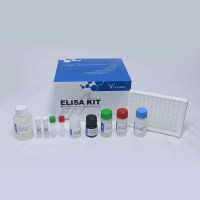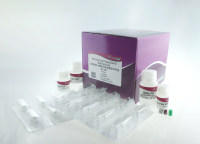Exploration of the Visual System: Part 1: Dissection of the Mouse Eye for RNA, Protein, and Histological Analyses
互联网
- Abstract
- Table of Contents
- Materials
- Figures
- Literature Cited
Abstract
Due to the power of genetics, the mouse has become a widely used animal model in vision research. However, its eyeball has an axial length of only about 2 mm. The present protocol describes how to easily dissect the small rodent eye post mortem. This allows collecting different tissues of the eye, i.e., cornea, lens, iris, retina, optic nerve, retinal pigment epithelium (RPE), and sclera. We further describe in detail how to process these eye samples in order to obtain high?quality RNA for RNA expression profiling studies. Depending on the eye tissue to be analyzed, we present appropriate lysis buffers to prepare total protein lysates for immunoblot and immuno?precipitation analyses. Fixation, inclusion, embedding, and cryosectioning of the globe for routine histological analyses (HE staining, DAPI staining, immunohistochemistry, in situ hybridization) is further presented. These basic protocols should allow novice investigators to obtain eye tissue samples rapidly for their experiments. Curr. Protoc. Mouse Biol. 1:445?462 © 2011 by John Wiley & Sons, Inc.
Keywords: ophthalmology; visual sciences; retina; cornea; lens; iris; retinal pigment epithelium (RPE)
Table of Contents
- Introduction
- Basic Protocol 1: Enucleation of the Mouse Eye
- Basic Protocol 2: Dissection of the Mouse Eye
- Support Protocol 1: Preparation of Sylgard 184 Silicone Elastomer
- Basic Protocol 3: RNA Preparation from Eye Tissues
- Alternate Protocol 1: RNA Preparation from Pure RPE Cells
- Basic Protocol 4: Protein Preparation from Eye Tissues
- Basic Protocol 5: Fixation, Inclusion, and Cryosection of the Mouse Eye
- Basic Protocol 6: Hematoxylin‐Eosin Staining
- Basic Protocol 7: DAPI Staining
- Basic Protocol 8: Immunohistochemistry
- Support Protocol 2: Multiple Histochemical Stainings
- Reagents and Solutions
- Commentary
- Literature Cited
- Figures
- Tables
Materials
Basic Protocol 1: Enucleation of the Mouse Eye
Materials
Basic Protocol 2: Dissection of the Mouse Eye
Materials
Support Protocol 1: Preparation of Sylgard 184 Silicone Elastomer
Materials
Basic Protocol 3: RNA Preparation from Eye Tissues
Materials
Alternate Protocol 1: RNA Preparation from Pure RPE Cells
Materials
Basic Protocol 4: Protein Preparation from Eye Tissues
Materials
Basic Protocol 5: Fixation, Inclusion, and Cryosection of the Mouse Eye
Materials
Basic Protocol 6: Hematoxylin‐Eosin Staining
Materials
Basic Protocol 7: DAPI Staining
Materials
Basic Protocol 8: Immunohistochemistry
Materials
Support Protocol 2: Multiple Histochemical Stainings
Materials
|
Figures
-

Figure 1. Enucleation (, step 4). Pull the eyeball gently off the orbit, by pressing with the fingers around the orbit and pulling them apart. View Image -

Figure 2. Enucleation (, step 5). Enucleate the eye by gently holding the eyeball with forceps and cutting the optic nerve with scissors at a distance of ∼2 mm from the eyeball. View Image -

Figure 3. Dissection of the eye (, step 2). Hold the eyeball with forceps on the cell culture dish and immobilize with Minutien pins, pinning through the sclera and extraocular tissues close to the optic nerve (asterisk). View Image -

Figure 4. Schematic representation of the mouse eye. The size of the eyeball is ∼2 mm. The major components of the eye are indicated. Please note the reduced volume of the vitreous in the mouse eye. Abbreviations: RPE: retinal pigment epithelium. View Image -

Figure 5. Dissection of the eye (, steps 5 to 7). After dissection of the mouse eye, several tissues can be isolated. The transparent lens (A ) often has iris tissue attached to the equator plane (asterisk). The yellowish retina (B ) too, may have attached iris tissue (asterisk). Dark pigmentation is further due to apical foldings of the RPE that are attached to the retina. The posterior optic cup comprises the melanized RPE and choriocapillaris, as well as the grayish sclera (C ). The white optic nerve extends form the eyeball (asterisk). With respect to the anterior segment, the melanized iris remains attached to the transparent cornea (D ). View Image
Videos
Literature Cited
| Literature Cited | |
| Braissant, O. and Wahli, W. 1998. A simplified in situ hybridization protocol using non‐radioactive labeled probes to detect abundant and rare mRNAs on tissue sections. Biochemica 1:10‐16. | |
| Chalupa, L.M. and Williams, R.W. 2008. Eye, Retina, and Visual System of the Mouse. The MIT Press, Cambridge, Mass. | |
| Donovan, J. and Brown, P. 2006. Euthanasia. Curr. Protoc. Immunol. 73:1.8.1‐1.8.4. | |
| Eldred, W.D., Zucker, C., Karten, H.J., and Yazulla, S. 1983. Comparison of fixation and penetration enhancement techniques for use in ultrastructural immunocytochemistry. J. Histochem. Cytochem. 31:285‐292. | |
| Escher, P., Lacazette, E., Courtet, M., Blindenbacher, A., Landmann, L., Bezakova, G., Lloyd, K.C., Mueller, U., and Brenner, H.R. 2005. Synapses form in skeletal muscles lacking neuregulin receptors. Science 308:1920‐1923. | |
| Haverkamp, S. and Wässle, H. 2000. Immunocytochemical analysis of the mouse retina. J. Comp. Neurol. 424:1‐23. | |
| Smith, R.S., John, S.W.M., Nishina, P.M., and Sundberg, J.P. 2002. Systematic evaluation of the mouse eye: Anatomy, pathology, and biomethods. CRC Press, Boca Raton, Fla. | |
| Sugita, S. and Streilein, J.W. 2003. Iris pigment epithelium expressing CD86 (B7‐2) directly suppresses T cell activation in vitro via binding to cytotoxic T lymphocyte‐associated antigen 4. J. Exp. Med. 198:161‐171. | |
| Taft, R.A., Davisson, M., and Wiles, M.V. 2006. Know thy mouse. Trends Genet. 22:649‐653. |








